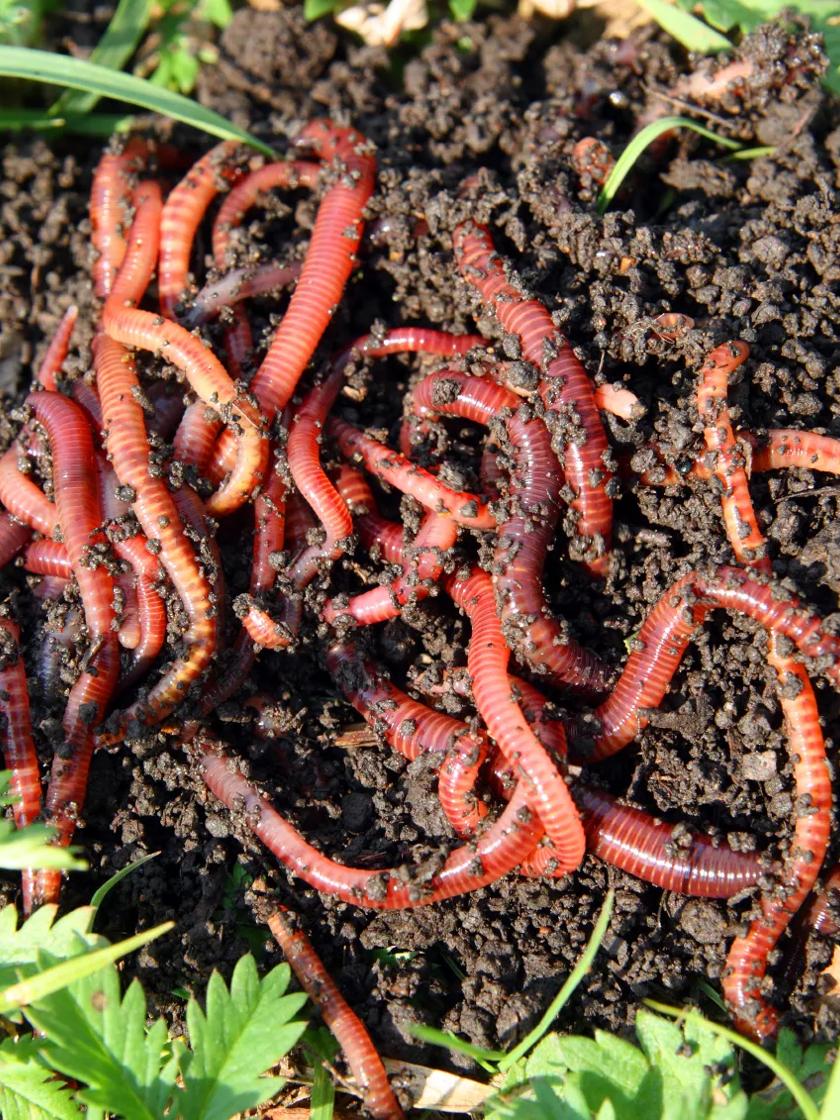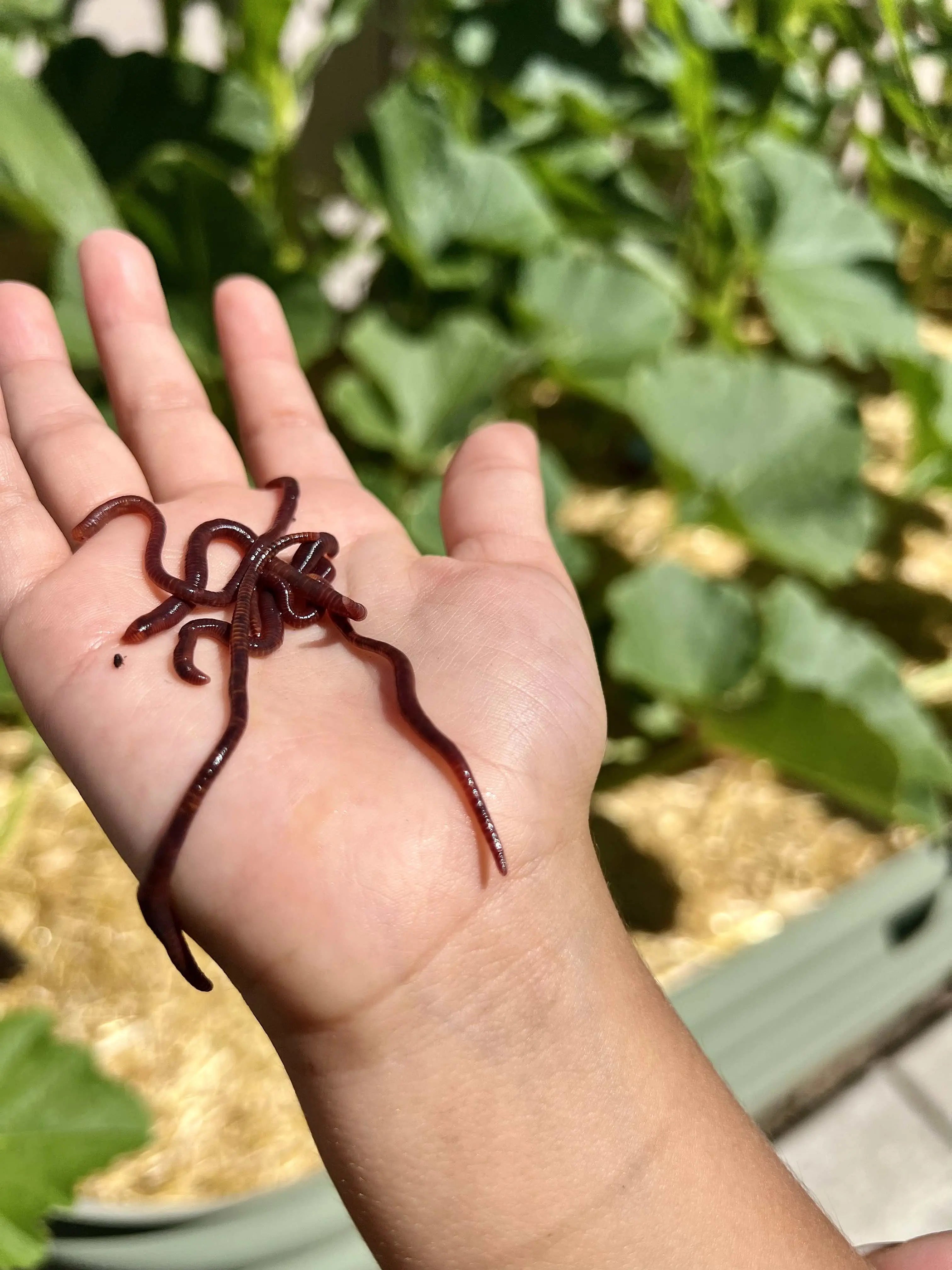Red Wigglers: The Unsung Heroes of Organic Waste Recycling
Red wigglers, or Eisenia fetida, serve as crucial representatives in the natural waste reusing procedure, changing thrown out materials into useful vermicompost. Their reliable breakdown of raw material not only improves soil quality yet additionally adds to lasting waste administration practices. As the world progressively looks for solutions to battle waste buildup and boost agricultural productivity, recognizing the function of these worms becomes essential. What systems enable them to flourish in garden compost environments, and just how can they be properly utilized in both domestic and industrial settings? Discovering these questions discloses the more comprehensive effects of vermicomposting in our eco-friendly landscape.
What Are Red Wigglers?
The amazing strength of red wigglers, scientifically recognized as Eisenia fetida, emphasizes their vital function in natural waste recycling. These little, reddish-brown earthworms are typically discovered in decomposing raw material, such as compost heap and manure lots. Lake Hickory Bait. Unlike various other earthworm types, red wigglers flourish in nutrient-rich settings and are very reliable at damaging down natural materials, making them crucial for vermicomposting

Benefits of Composting With Worms
Composting with worms, particularly red wigglers, uses countless advantages that enhance both waste administration and dirt wellness. First, these worms efficiently damage down natural waste, transforming it into nutrient-rich vermicompost that enriches dirt. This procedure accelerates decomposition, permitting a much faster recycling of kitchen scraps and other organic products contrasted to typical composting methods.
Furthermore, the vermicompost generated by red wigglers is bristling with useful microbes, which assist enhance dirt structure, oygenation, and dampness retention. This improves the general health and wellness of plants, promoting vigorous development and enhanced yields in yards and farming settings. Additionally, making use of worms in composting minimizes the manufacturing of greenhouse gases, such as methane, contributing to a more lasting waste administration system.

How to Start Vermicomposting
Establishing a vermicomposting system is an uncomplicated process that can yield considerable advantages for both waste monitoring and dirt enrichment. To begin, choose an appropriate container, such as a plastic container or wood box, with adequate ventilation openings to guarantee correct air movement. The measurements should ideally be around 2 feet by 3 feet, enabling adequate area for the worms to grow.
Next, prepare bedding material, which can contain shredded paper, cardboard, or coconut coir. This bedding ought to be moistened to create a suitable habitat for the worms. When the bed linen remains in area, present red wigglers (Eisenia fetida) into the bin, usually around one extra pound of worms for every single square foot of surface.
Adhering to the positioning of worms, include organic waste, such as fruit and vegetable scraps, coffee grounds, and smashed eggshells. Prevent adding dairy products, meat, or oils, as these can produce odors and attract pests. Place the bin in a shaded, temperature-controlled location to maintain optimum conditions for worm activity. With these actions, you will properly launch a vermicomposting system that adds to sustainable waste administration and enriches your dirt.
Keeping a Healthy Worm Container
Aeration is critical also. Carefully mixing the bed linen and food scraps every couple of weeks avoids compaction and makes certain that all worms have access to oxygen. In addition, it is very important to feed the worms suitably. A balanced diet plan of fruit and veggie scraps, coffee grounds, and crushed eggshells should be provided in small amounts to stay clear of overfeeding, which can lead to odors and parasites.
Temperature policy is one more crucial facet. Red wigglers thrive in a variety of 55 to 77 degrees Fahrenheit. If the container becomes too hot or chilly, the worms may come to be stressed - Lake Hickory Bait. Last but not least, regularly look for indications of health and wellness, such as worm populace development and the visibility of healthy and balanced spreadings. By faithfully taking care of these variables, one can keep a durable and effective worm container.
Influence On Sustainable Living
The successful upkeep of a worm bin not just profits the health and wellness of red wigglers however also adds considerably to sustainable living techniques. By reusing organic waste, such as kitchen scraps and backyard particles, red wigglers assist divert significant quantities of material from landfills. This decrease in waste not just decreases greenhouse gas emissions however likewise decreases the ecological worry related to waste management.
Moreover, the spreadings generated by red wigglers serve as a nutrient-rich organic plant food, enhancing dirt health and wellness and promoting plant development. This natural alternative to chemical plant foods sustains sustainable farming and gardening practices, lowering reliance on synthetic inputs that can hurt communities. Furthermore, worm composting cultivates recognition of waste monitoring, encouraging people and communities to take on more lasting routines.

Verdict
In summary, red wigglers work as important factors to organic waste recycling with their effective decay of natural materials. Their capability to create nutrient-rich vermicompost boosts dirt wellness and sustains sustainable farming techniques. By incorporating vermicomposting right into waste monitoring approaches, individuals and neighborhoods can dramatically lower waste while advertising ecological sustainability. The function of Eisenia fetida in promoting healthy ecological communities emphasizes the value of these microorganisms in accomplishing sustainable living and enhancing dirt fertility.
Comments on “Red Wiggler Express: A Reliable Name for Worms and Supplies”